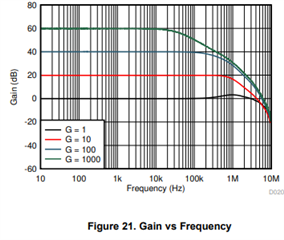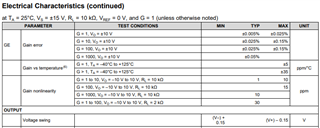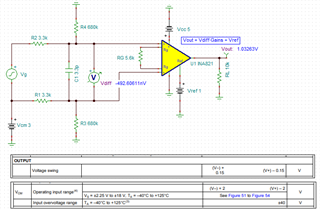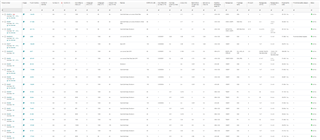Other Parts Discussed in Thread: OPA835
Hello, we have the following circuit:
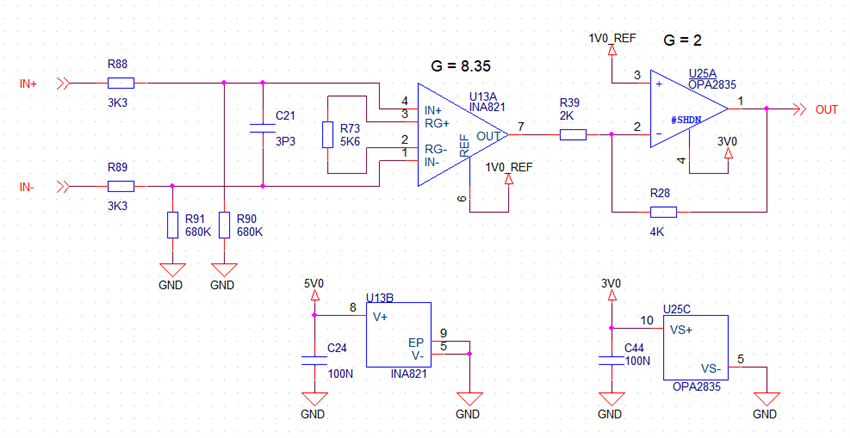
The input signal is at Vcm = 2.5 V, Vdiff up to 12 mV, frequency ranging from 1 kHz to 1 MHz. We want the output signal to swing around 1.0 V.
However, when the reference voltage is set to 1.0 V, the output signal from the INA821 has a DC level of approx. 1.53 V (which given the OPA835's inverting configuration results in an output signal near 0V).
Raising the reference voltage (for both the INA821 and the OPA835) to 1.53 V or higher makes the circuit operate as expected. However, I cannot find anything in the INA821 datasheet explaining why the reference voltage needs to be above 1.53 V. Also, the TI Analog Engineer Calculator indicates that a reference voltage of 1.0 V should work perfectly fine.
Why does the circuit not work with a reference voltage of 1.0 V?



